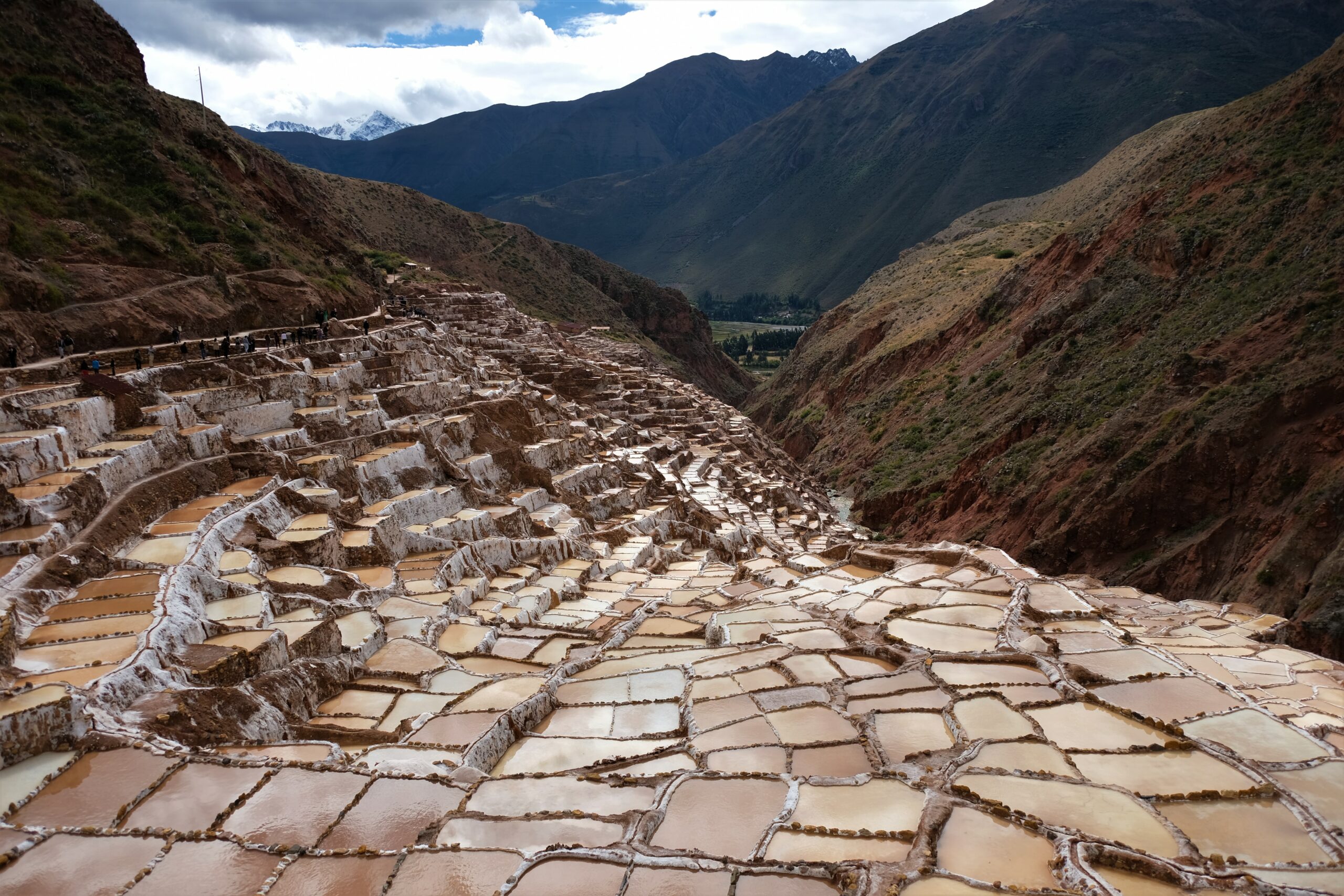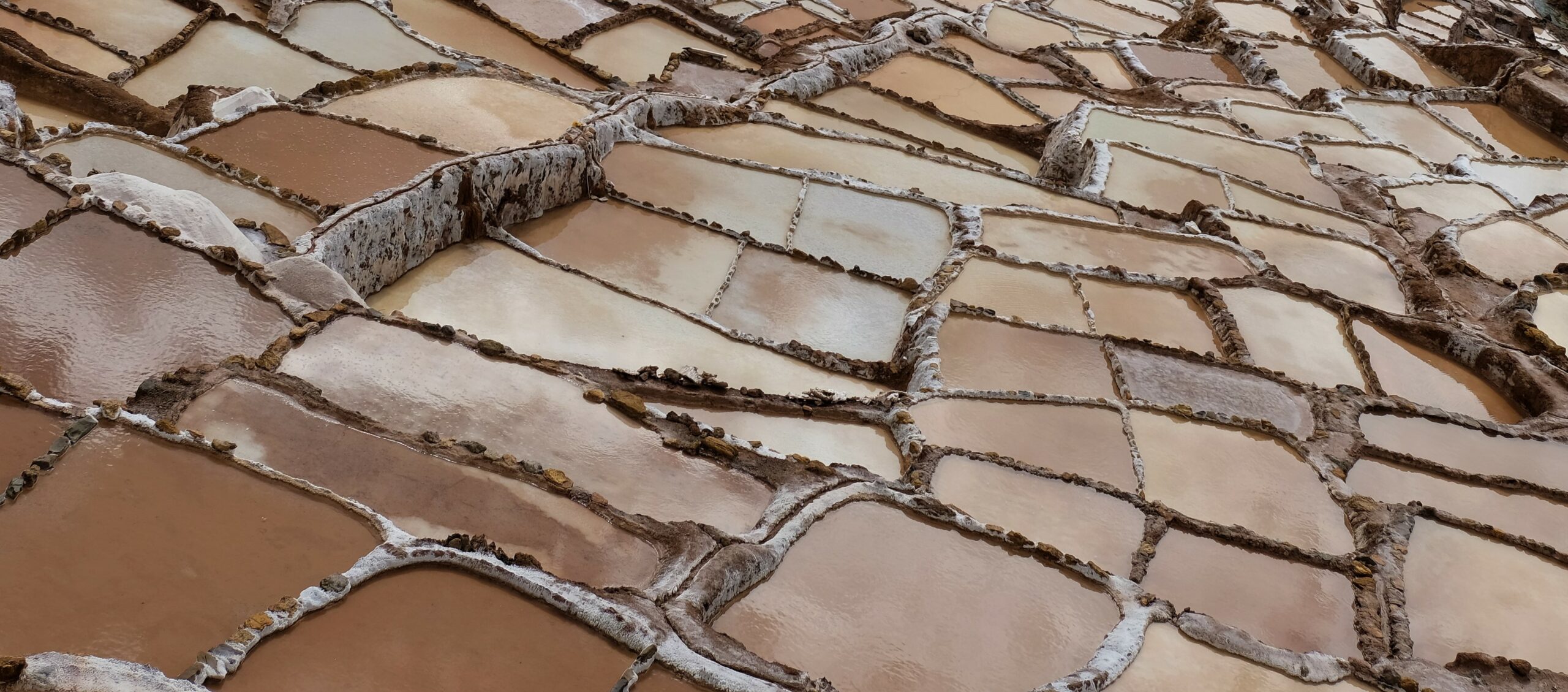To start with, the collectivo to Moray, Maras Salt Ponds and Chinchero was a short walk from my B&B. I didn’t know anything about Moray, not that it even existed. There was a picture of it in the reception area of my B&B, El Tuco. The picture looked interesting but mostly serene…I wanted to there. Things could have been a lot more complicated if it weren’t for Coco and his family, especially Coco (I mentioned him in Part 1 when I arrived in Cusco). Coco was always happy to help, and never “sold” anything with his information i.e. I have a friend who can help you at a great price. He gave me loads of ideas and options; on every account the first opinion/advice was the cheapest.
Getting to Moray
Less than 200m from El Tuco was the collectivo pick-up point. Collectivo’s are a topic on themselves, which I’ll get into after this. For the life of me I can’t remember how much it cost, in reality it would have been a few £ or $s – I doubt more than £5 but really can’t remember. Public transport is cheap, considering Moray is about 50km from Cusco. It was cheap enough for me to consider taking a taxi, but how much fun would that be!?
Briefly, you want a collective going to Urubamba telling the driver you are going to Moray/Maras. I say both because Maras is the nearest town to Moray. When the driver called out Moray/Maras (can’t remember which) I was a little concerned as the stop was in the middle of nowhere. A t-junction so remote I was surprise to see what I guessed were a few taxis waiting. First impressions aren’t always correct, this was a good example. This remote stop is the main stop to Maras, continue on in the direction I was going without getting off would take you to Urubamba. They were indeed taxis waiting, either to take people to Maras, but mostly waiting for people like me heading to Moray. You can hike to Moray, it’s around 5.5km from Maras, 9.5km from the t-junction.
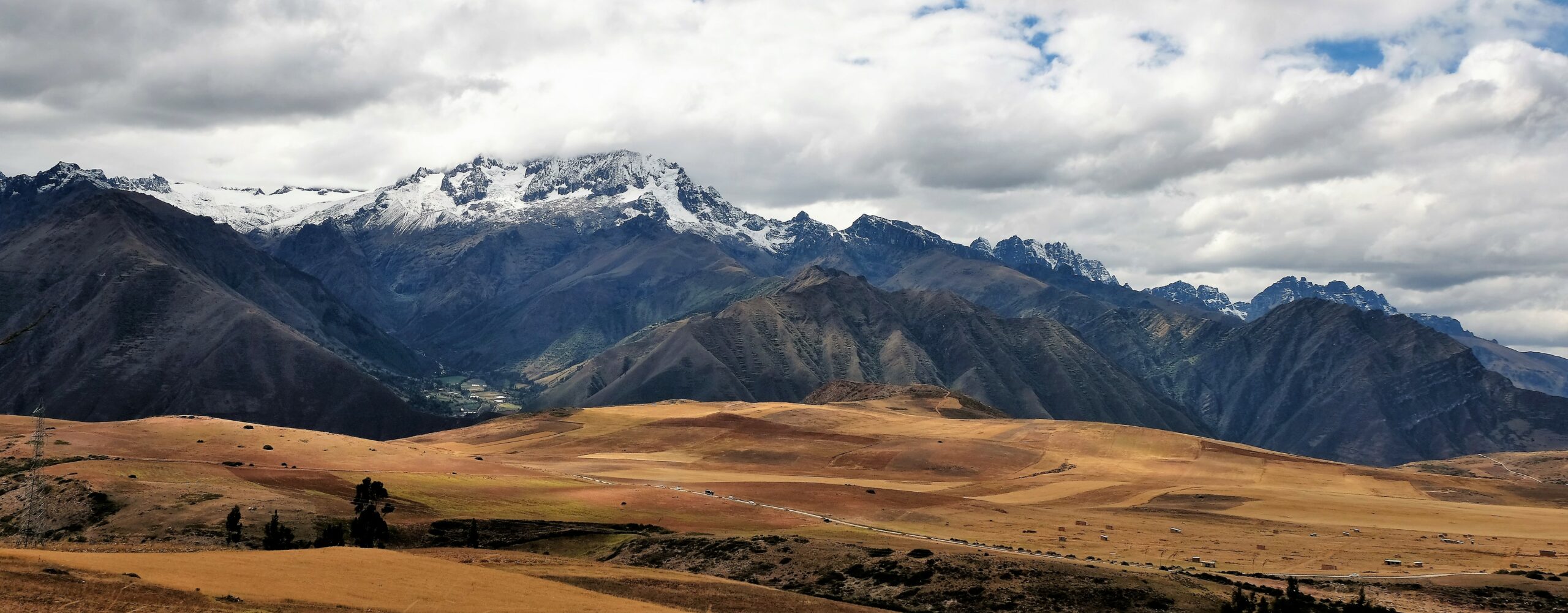
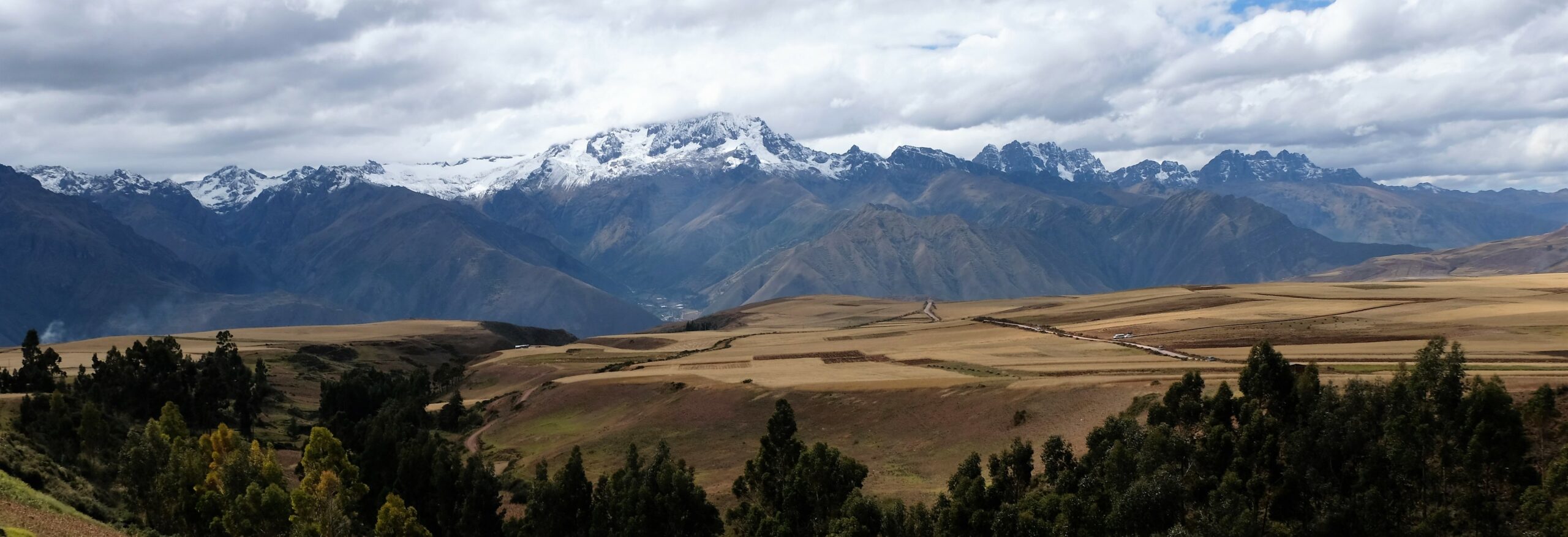
Taxi tip
Either you get a taxi to Moray then get another taxi from there to the Salt Ponds or wherever you want. Most people, including me, negotiated with a driver to take me to Moray, Salt Ponds then Chinchero. It was silly of me to include Chinchero in the price, I could have done it much cheaper getting another collectivo from the t-junction, much cheaper! Even so, it wasn’t expensive or I wouldn’t have done it. My reasoning was to save time, so paying extra as I didn’t know how frequently the collectivos were. I wouldn’t do it the same if I redid it.
I mentioned Chinchero. My plan for the day was to see Moray, Maras Salt Ponds and Chinchero. Reason for not including it in the post is because it would make it too long, it would also limit the number of photos. That being said, Chinchero will be the next post. Hmmm…let’s see how things go, maybe I’ll include it ?
To summaries, I paid more than I should have. The negotiating was easy, some people do hire the taxis for “x” number of hours; I agreed where I wanted to go, and agreed on how long at each site (Moray and the Salt Pondss) – I’d make my own way back from Chinchero.
If I redid the trip:
- Collectivo to the t-junction,
- Taxi to Moray (spend 1.5 hours there and not 1)
- Quick trip to the Maras Salt Ponds (30 minutes at most)
- Get dropped off at the t-junction to get collectivo to Chinchero


Moray
Cupped between the crests of the mountain tops lie the hidden fascinating ruins of Moray. These ruins are concealed from sight till you reach the rim of the hill’s edge. From here, looking down where the cavity should be is a near otherworldly sight. Zen like rings running along the contours of the hill in concentric formation. Starting from the sump of the depression they are mostly circular; increasing by approximately 1.8m in height per terrace, they follow the contours of the hillside. Ebbing and flowing against the gradient of the hill the terraces “S” along in a wave like pattern. Staring at these structured formations is hypnotic, their lines are elegant and in tune with the habitat.
The terraces and walls have a natural feel, they are at one with their environment. These structures don’t scar the landscape like many other constructions. No, they look and feel at harmony with nature and enhance the terrain’s aesthetics. If you could imagine the lines of a topographic map etched onto the landscape, that’s my best description. Not a straight edge in site, as if drawn using a French curve stencil. Neatly protruding stones jut out of the walls to form stairs on each level; each level has a few stairs at various points. From a distance they form a zigzag from one level to the next, as the stairs are aligned with each other.
Additionally, an interesting fact about Moray, along with the sophisticated aqueducts that feed each level. The lower levels never flood, not even during heavy rainy seasons. There are two possibilities for this, firstly it could be that this area has a great natural drainage system. Secondly, the Incas created the drainage system which is below surface and yet to be discovered. Either way, the Incas either chose this amazing place or the sculpted it into fit their purpose…just another unanswered question.



Some background information
If you’re expecting a detailed background with facts, ha! You’re wrong! Such a pity so little is known about the Incas (it has frustrated me to the nth degree!), that’s me repeating myself again like in my previous post. There is more information about any individual pyramid of Giza than the combined information of all the Inca sites I visited; that’s no exaggeration at all. Nobody really knows when Moray was built. There is a high degree that the region was occupied prior to Moray’s construction. There are terraces throughout the region meaning in all probability agriculture had been happening here for many many years. It’s in the Urubamba Valley / Sacred Valley, am important region for the Incas. Today it may be hidden from side and feels remote, back in its prime I guess everyone would have known about its location…not a secret at all.

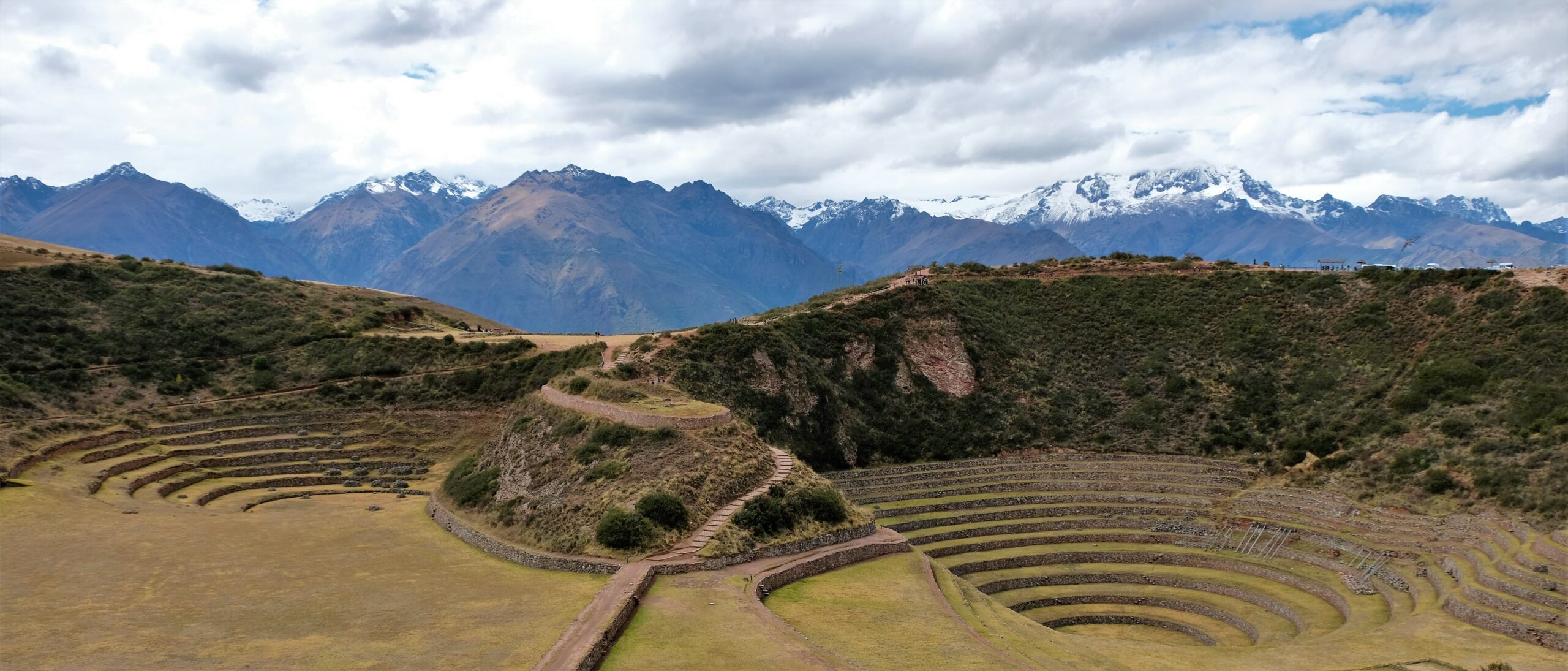
Thoughts on its purpose and use
Lots of guesses here, except that it was used for agriculture. Moray looks uniquely aesthetic, but it’s more than a pretty feature. These terraces are filled with different soils from throughout the Inca Empire. Therefore the hypothesis is that they grew various produce from across the empire. At circa. 3500m altitude this would normally be impossible; however, the Incas are a lot smarter than people give them credit. From the base of the lowest circle to the uppermost ring is about 30m, but that’s not what makes Moray special. What makes it so special is the temperature difference from top to bottom…an astounding 15 degrees Celsius (the bottom the warmest)!
Combining the different soils, their ingenuity, farming expertise and temperature difference, it meant the Incas could grow a variety of crops irrespective of altitude. Pollen taken from the soil show a large array of crops were grown here especially potatoes, corn, lima bean and many other wild vegetables. On a separate note, I didn’t know the first domesticated potatoes were cultivated in
Peru and Bolivia, that and most familiar types of corn. I’ve read quite a bit where Moray is described as a laboratory for vegetation experimentation. To some degree I agree, but I think it undermines what the Incas achieved here. Experimentation has an air of haphazardness, Moray is no “let’s see what happens”. In my mind the Incas did their experimentation throughout the Empire, Moray is the culmination of years of tried and tests methods. Moray (my hypothesis), is the final product the equivalent of how Ford perfected the car manufacturing production line. Here food was produced to disseminate to the region. No longer limited to produce of the region, they could grow and eat foods from every corner of the Inca Empire.
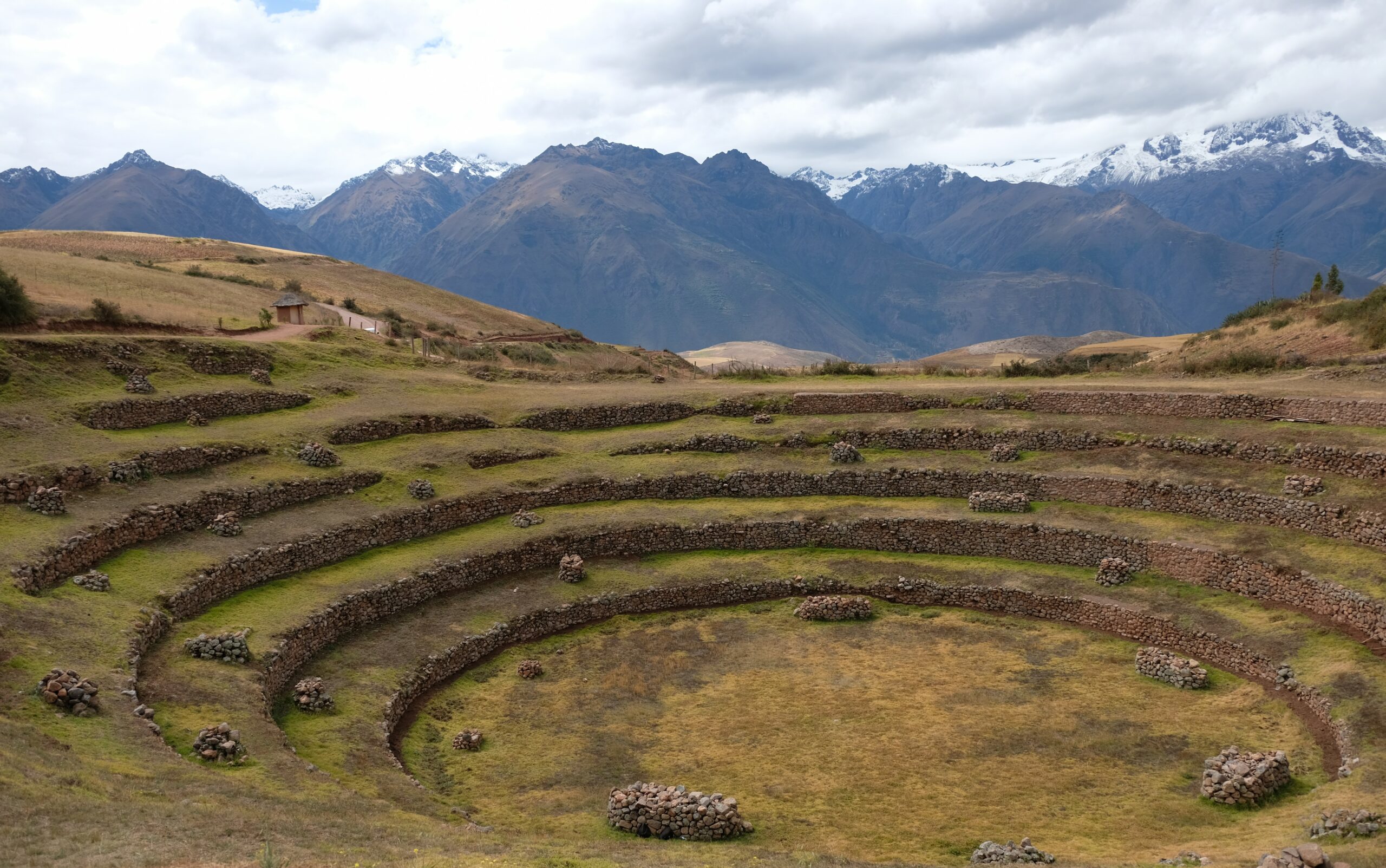
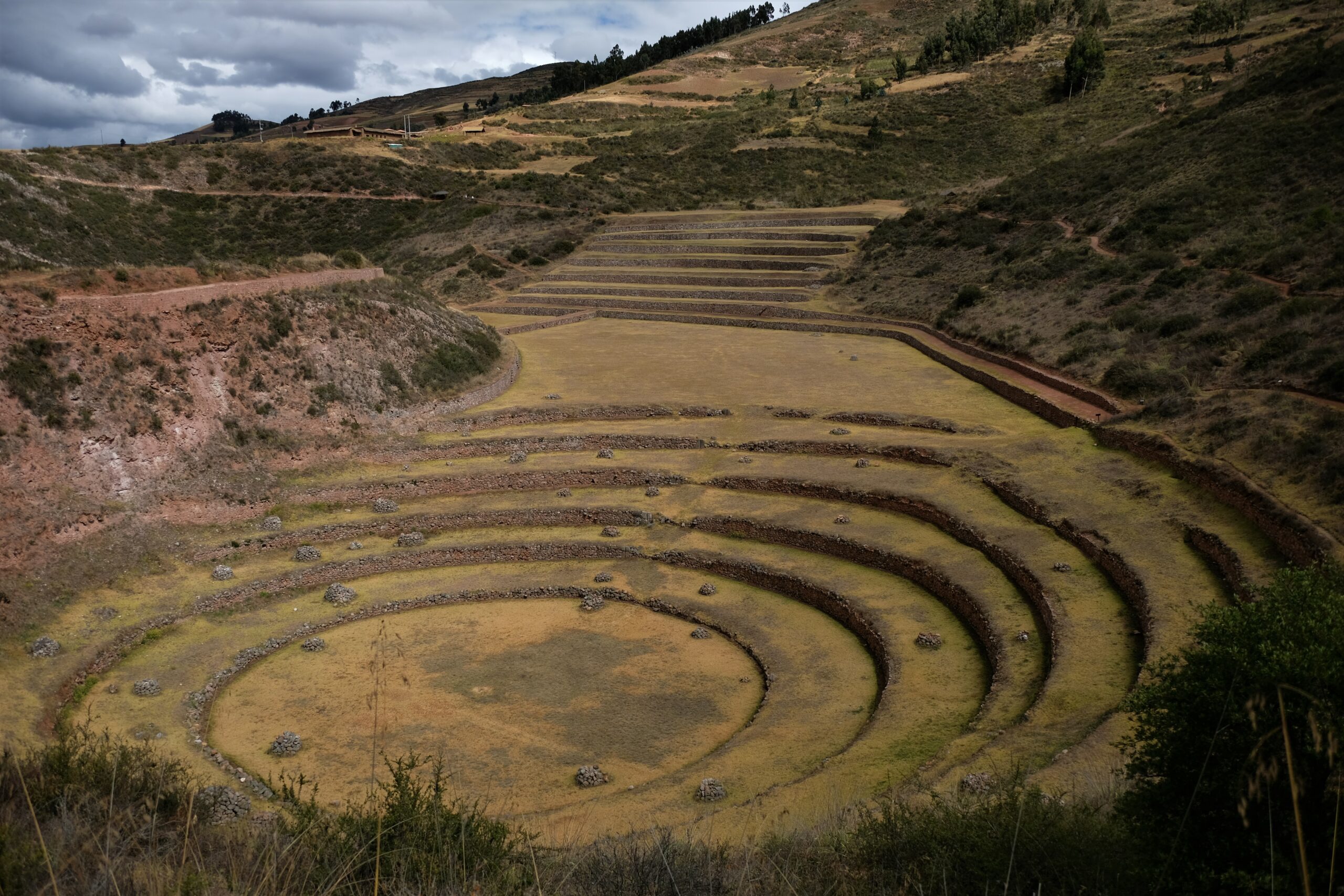
Getting to Maras Salt Ponds
I spent an hour at Moray, would have like to spend another 30 more minutes at least. Next stop was Maras Salt Ponds about 14.5-17.5km drive away depending on which route you take. We rode through some of the back roads of the town Maras; a tiny town around 1km long and less wide. Almost all the houses I saw were built of sun-baked mud bricks. This is an economically poor area, very poor with most of the houses/buildings in a state of disrepair. An overriding similarity for all the buildings is the colour, a rusty light red brown. Either the houses are left without plastering or those that are have a lite coating with a whitewash too (I’m guessing). A scattering of painted buildings stick out like a sore thumb.
Living here must be a tough life. This may be a poor town, with crumbling buildings and I’d hate to think how structurally sound they are but, the town is clean. Yes, it’s dusty, but the roads and alleyways are clean with no garbage or papers lying about – the pavements and roads look swept. Maras may be poor, but they are proud. My perception of “poor” has changed during my travels, though this is not the time to write about that. During my travels a lot of my preconceived ideas and unconscious biases have been challenged, with many of my thoughts and ideas changes through my experience. It is something I will write about in the future when I feel I can do it justice.
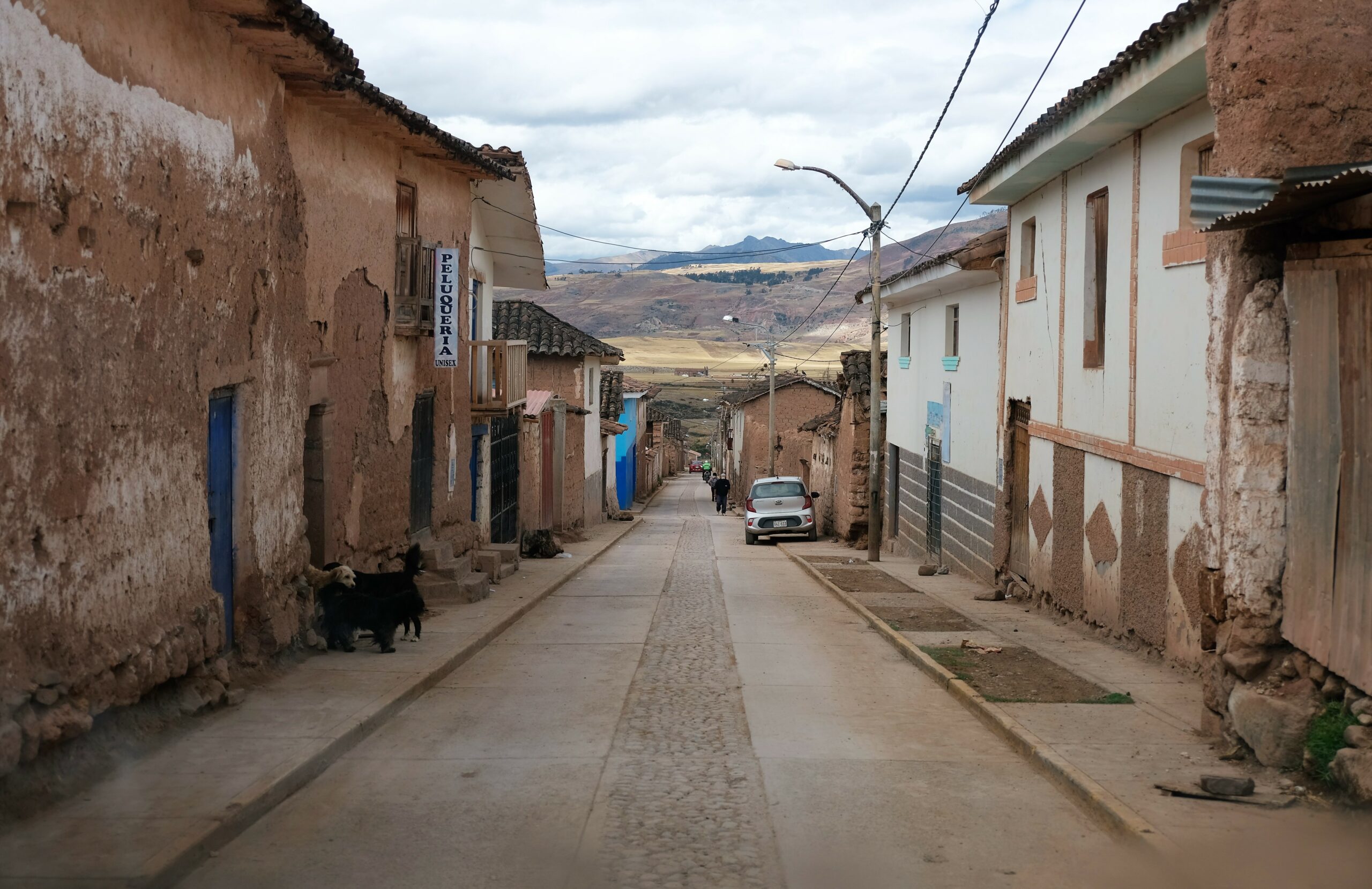
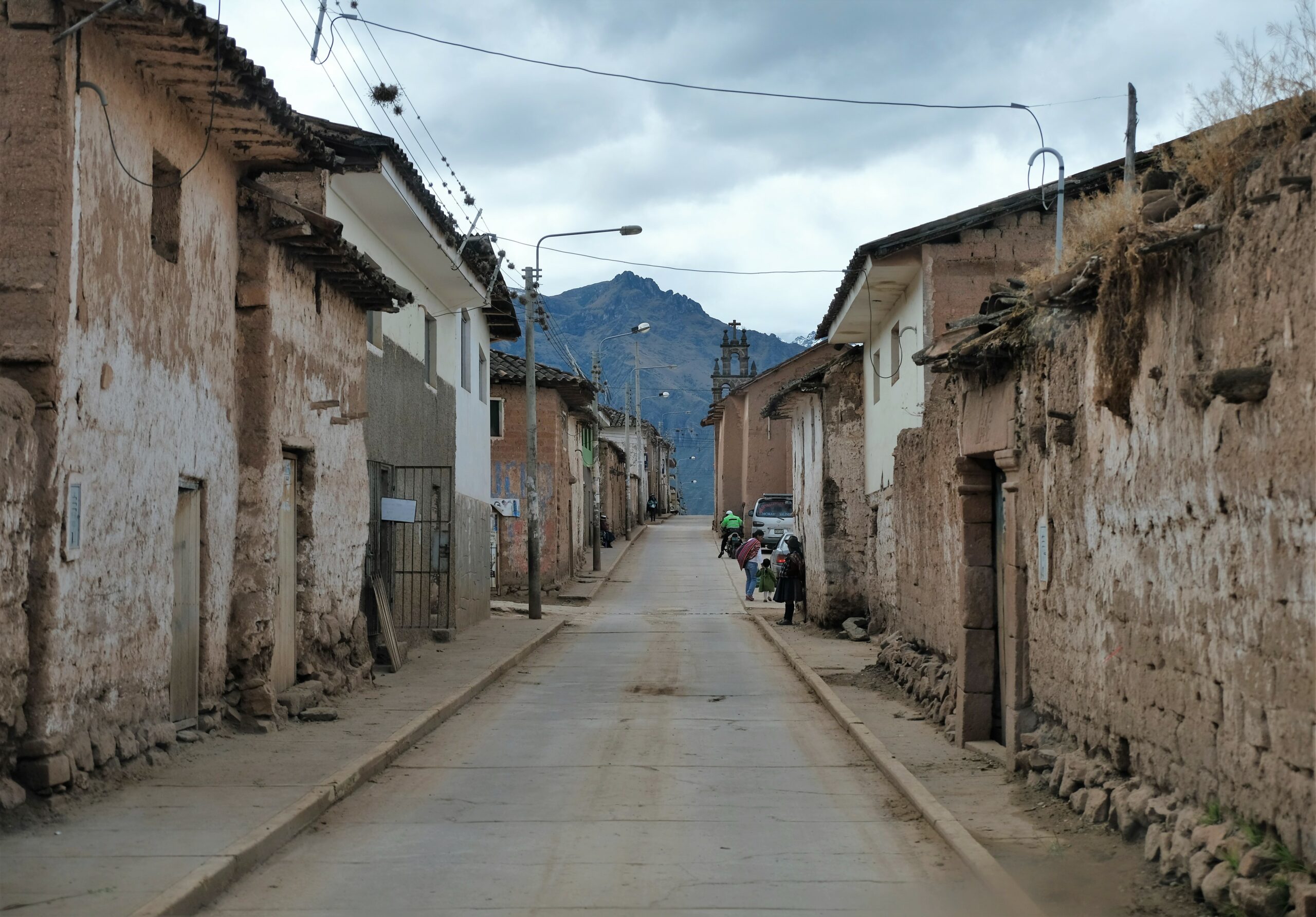
Maras Salt Ponds
Not like me to start with a caveat, but I didn’t spend long here; 30 minutes at most. It’s interesting to see this man-made alteration to a hillside but I really wanted to get to Chinchero. Often referred to as a Salt Mine, I guess it is similar to an open cast mine. These ponds have been in existence since pre-Inca times, and they are still actively used today – not all the ponds. The salt comes from the water of a natural underground spring and allowed to evaporate.
Each pond is around 4 square meters and no more than 30cm deep. The method of moving the water from the spring, distributing it equally and through all the ponds hasn’t change for hundreds of years. Using gravity and an intricate network of channels the water is funnelled like a spider’s web allowing the almost 5000 ponds to be filled individually. Once the pond it filled and evaporated the salt is harvested. Each pond has an inlet and outlet opposite each other used to fill and drain the water from the feeder channel.
In order for this whole system to work efficiently takes the full cooperation of the farmers. They all come from Maras, which is a prerequisite to use the Maras Salt Ponds. This collaboration is like a cooperative, the better they work together the more productive they are allowing them to harvest more efficiently and frequently (weather dependant). The size of the pond depends on your family size and if your new to the community then you’ll get a pond lower down the hill.
Hmmm to write about Chinchero or not…I’ll leave it for the next blog post. As usual I’ll post this on a Thursday with all the photos and supplementary photos posted the following Saturday on my Batnomad Facebook page.

